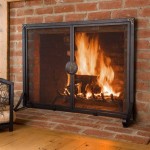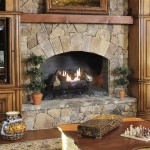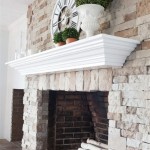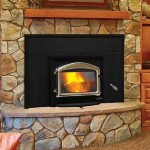Fireplace Mantel Height: Considerations for Design and Functionality
The fireplace mantel, a decorative and functional element above a fireplace, plays a crucial role in the overall aesthetic and functionality of a room. Its height, specifically, can significantly impact the visual balance of the space and the ease of use of the fireplace. Determining the optimal mantel height requires careful consideration of several factors, including the scale of the fireplace, the room’s dimensions, and the desired aesthetic. This article explores the key considerations for fireplace mantel height, offering insights to guide design choices.
Understanding the Importance of Mantel Height
The height of the fireplace mantel is not merely an aesthetic choice. It plays a vital role in ensuring the fireplace’s functionality and enhancing the room’s visual appeal. A well-placed mantel contributes to the overall harmony of the design by providing a visual anchor for the fireplace and creating a sense of balance within the room.
A mantel that is too high can make the fireplace appear dwarfed and detract from its presence in the room. Conversely, a mantel that is too low can create a sense of imbalance and make the fireplace feel overwhelmed. The optimal height ensures that the mantel complements the fireplace without overshadowing it while maintaining a visually pleasing proportion with the surrounding space.
Factors to Consider When Determining Mantel Height
Several factors influence the ideal mantel height, each contributing to a final decision that balances functionality and aesthetics. These factors include:
1. Fireplace Size and Scale
The size and scale of the fireplace are fundamental considerations when determining the mantel height. A larger fireplace typically calls for a higher mantel to maintain proportion and prevent it from appearing disproportionately large in the space. On the other hand, smaller fireplaces may benefit from a lower mantel to maintain balance.
The relationship between the fireplace opening and the mantel height should also be considered. If the mantel is too close to the fireplace opening, it can obstruct the view of the flames and make it difficult to utilize the fireplace effectively. A good rule of thumb is to allow at least 12-18 inches between the top of the fireplace opening and the bottom of the mantel.
2. Ceiling Height
The height of the ceiling significantly impacts the perceived height of the mantel. In rooms with high ceilings, a higher mantel can create a sense of balance and prevent the fireplace from appearing dwarfed. However, in rooms with lower ceilings, a lower mantel may be preferable to avoid making the space feel cramped.
A general rule of thumb is to aim for a mantel height that is roughly one-third of the ceiling height. This proportion helps to create a visually appealing balance between the mantel and the surrounding space. However, this is just a guideline, and it’s important to consider the overall scale and proportions of the room to make the most appropriate decision.
3. Room Dimensions
The overall dimensions of the room also play a role in determining the appropriate mantel height. In a large room, a higher mantel can help to create a sense of grandeur and emphasize the fireplace’s presence. However, in a smaller room, a lower mantel may be more suitable to avoid overwhelming the space.
The relationship between the mantel height and the height of surrounding furniture should also be considered. A mantel that is too high can create a sense of disconnect from the rest of the room. A mantel height that aligns with the tops of nearby furniture can create a more cohesive and balanced effect.
4. Functionality and Usage
The intended functionality of the fireplace also influences the optimal mantel height. If the fireplace is primarily for decorative purposes, the mantel height can be determined purely by aesthetic considerations.
However, if the fireplace is intended for regular use, the mantel height should be carefully considered to ensure ease of use. A mantel that is too low can make it difficult to access the fireplace or obstruct the view of the flames. Conversely, a mantel that is too high can make it difficult to hang artwork or other decorative elements above the fireplace, as the space may be difficult to reach.
5. Aesthetics and Design
Ultimately, the final decision on mantel height should take into account aesthetics and design preferences. A mantel that is too high can create a sense of emptiness above the fireplace, while a mantel that is too low can make the fireplace feel crowded.
The desired style of the mantel also influences its height. For example, a traditional mantel might be better suited to a higher placement, while a contemporary mantel might look best at a lower height. The placement of the mantel should complement the style of the fireplace and the overall design of the room.

Fireplace Mantels Installation Care Redwood Burl Inc

How To Select And Size Your Fireplace Mantel Water S Edge Woods Custom Wood

Mount Vernon Mantels Measuring Your Fireplace For A Mantel

Best Fireplace Mantel Proportions How Not To Muck It Up Laurel Home

How To Build Install A Fireplace Mantel We Love Fire

How To Select And Size Your Fireplace Mantel Water S Edge Woods Custom Wood

Result For Standard Mantel Height Fireplace Mantels Surrounds Contemporary

Best Fireplace Mantel Proportions How Not To Muck It Up Laurel Home

Nicole Fireplace Mantel Siteworks Mantels

Diy Fireplace Faux Mantels Home
Related Posts








